| Intl. Notebook | Jul 9 2021 |

Color, form, and function in the nuclear age.
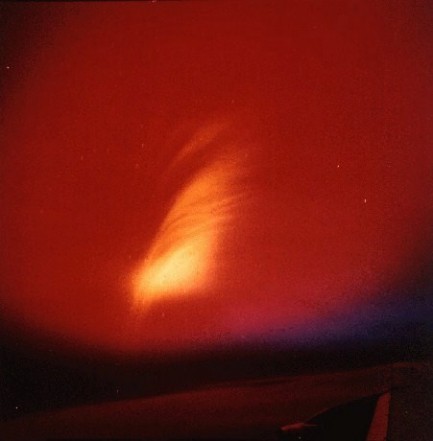
This photo looks like a shot of the northern lights, but it's actually an image of the Starfish Prime nuclear test, which was conducted today in 1962 as part of the test series codenamed Operation Dominic. The photo was shot from a high flying airplane, which just goes to show that at a sufficient distance anything can look beautiful. You can just see the wing of the aircraft at the lower right of the shot. This test was unique in U.S. history up to that point because the warhead was mounted on the nose of a Thor rocket launched from Johnston Atoll, and the subsequent suborbital nuclear blast occurred two-hundred fifty miles above the Pacific Ocean. People from Hawaii to New Zealand saw the sky turn red. The electromagnetic pulse from the blast knocked out electrical service, telephones, streetlights, set off burglar alarms as far as a thousand miles away, and damaged satellites.
The test alarmed many, and had been protested in advance in various cities around the world, yet those protests achieved nothing. As the decades have worn on treaties have been signed and broken, hopes for abandoning these weapons raised and dashed, even as they've been steadily upgraded. Today there are nukes that make Starfish Prime look like a bottle rocket, including hypersonic missiles developed by both the U.S. and Russia that fly at up to 15,000 mph, which is too fast to be shot down or even reliably detected due to the incredible speed creating a plasma cloud that baffles radar. Of course everyone knows that there's no way to win a nuclear exchange, and the only outcome of even a half dozen nuclear blasts would be the destruction of civilization in its current form, yet the race to build planet killers goes on because of the immense profits involved. Humans are truly a mad species.
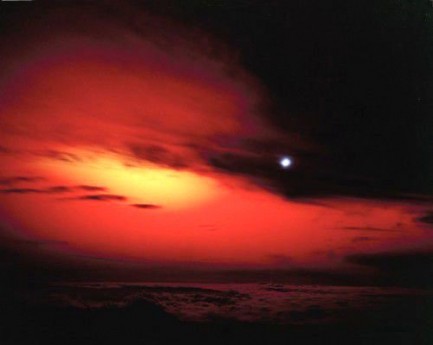
| Intl. Notebook | May 8 2021 |

It isn't somewhere you want to spend a lot of time.
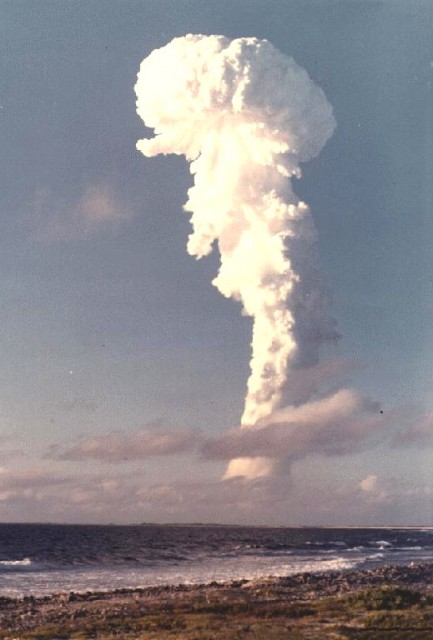
This photo shows a mushroom cloud in the process of rising to a height of 52,000 feet after a 100 kiloton yield nuclear bomb was dropped from a B-52 bomber near Christmas Island, a coral atoll south of Java, Indonesia, and now part of the Republic of Kiribati. The bomb was set off by the U.S. as part of Operation Dominic today in 1962. As we've mentioned before, the western powers are in the midst of another nuclear arms race, a fact that seems to get lost in a swirl of far less important news. Since mid-century crime fiction and films often touch upon the original nuclear arms race and its enveloping Cold War, we occasionally take a moment to look at these tests, and to remind people that nuclear weapons are pointless and stupid. Have a good day.
| Intl. Notebook | Mar 28 2021 |

It's a tough job but some tabloid has to do it.
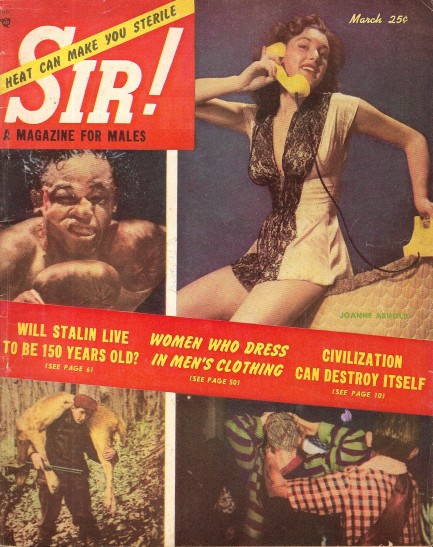
Above is the cover of a March 1953 issue of Sir! magazine, and in an example of the ephemeral nature of such items, shortly after we scanned this we spilled a glass of red wine on it. So behold! It's even more rare than it was when we bought it. Above the slash you see boxer Kid Gavilan, he of the famed bolo punch, and on the right is model Joanne Arnold, who we've featured before here, here, and here. She doesn't appear inside. But what you do get is a jaunt through such exotic locales as Melanesia, Tahiti, and Lisbon in search of knowledge and thrills.
We were drawn to the Lisbon story, which the magazine describes as a capital of sin. To us the word “sin” means late nights, good intoxicants, fun women, and excellent entertainment. To Sir! it means being cheated, robbed, framed, and arrested. To-may-to to-mah-to, we guess. We've spent some time in Lisbon and we love it. We don't know what it was like in 1953, but Europe was still coming out of World War II, which means many countries—even non-combatants like Portugal—were wracked by poverty. So we wouldn't be surprised if thieves were out in droves.
Elsewhere inside Sir! you get art from Jon Laurell and Joseph Szokoli, photos of model Jean Williams and Tahitian beauty queen Malie Haulani, a story on the danger of nuclear weapons, anthropological snobbery in exposés about New Caledonia and the Kogi people of Colombia, and fanciful theories about Russian scientists working to keep Josef Stalin alive for 150 years—which didn't work, because he died a mere five days after this issue of Sir! hit the newsstands. Clearly, the magazine is cursed. It certainly cursed our wine glass. We have thirty-five scans below for your enjoyment and other issues of Sir! here and here.
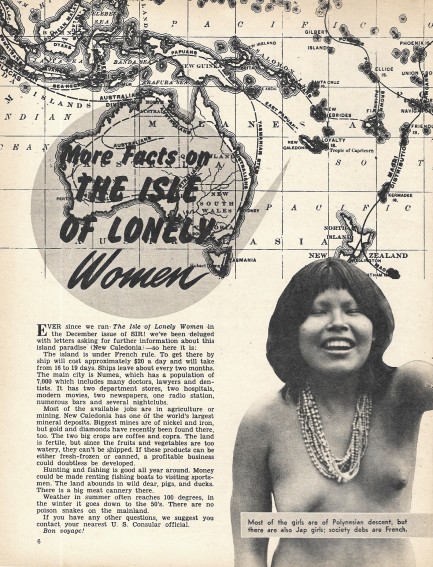
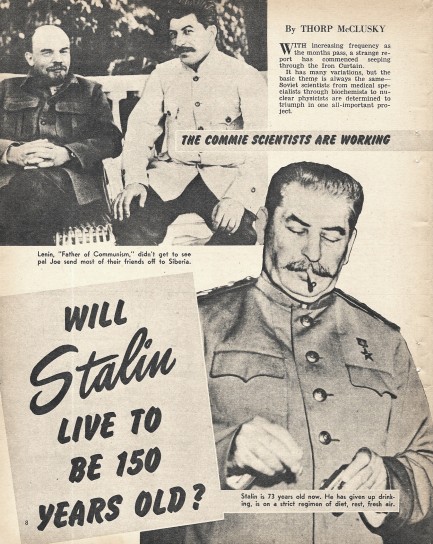

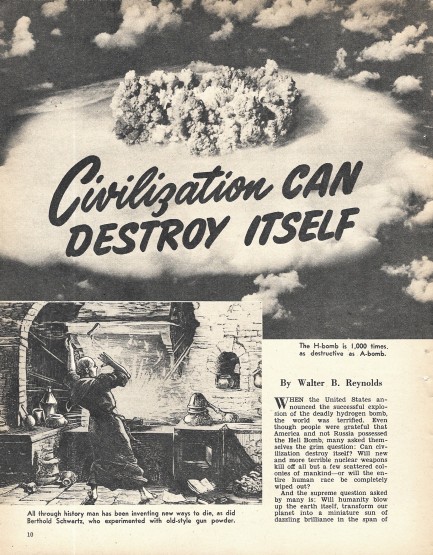
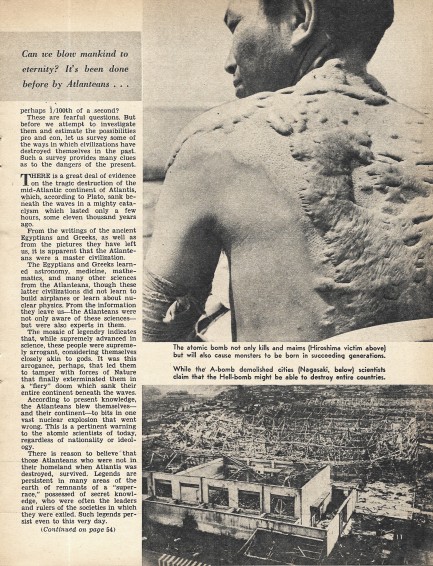
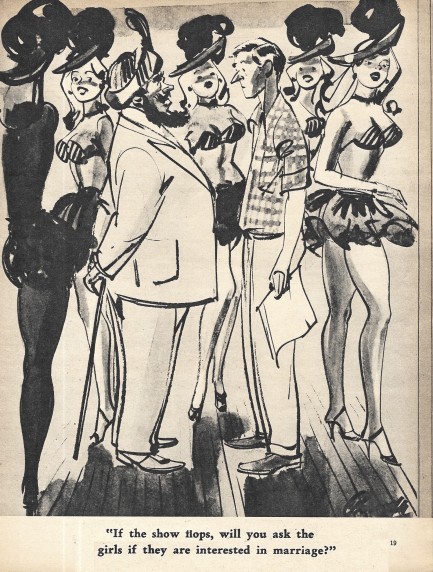
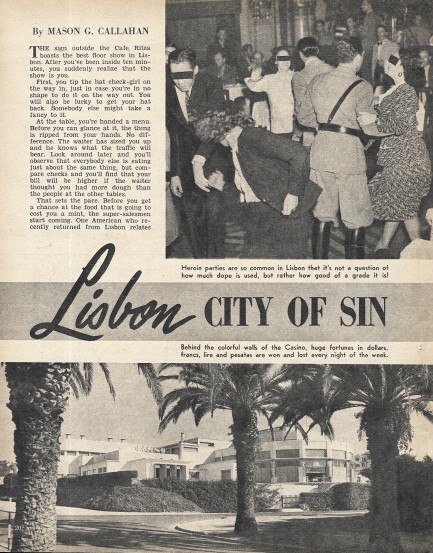


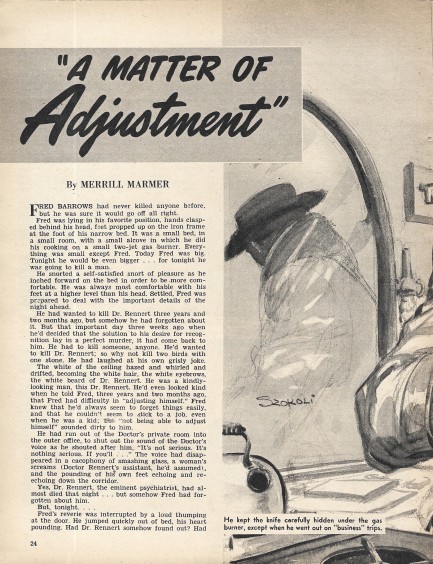
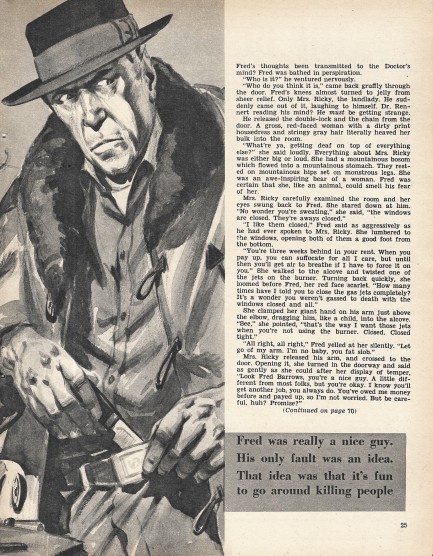
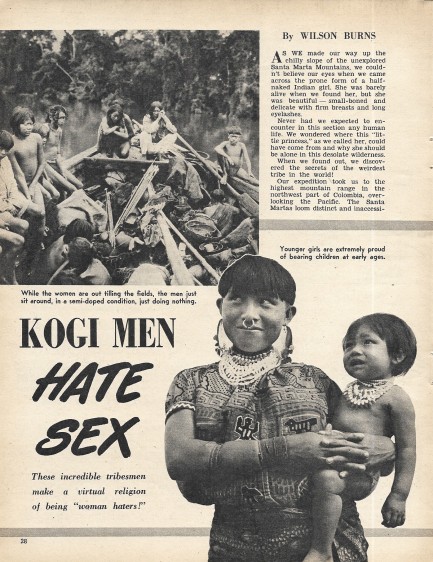
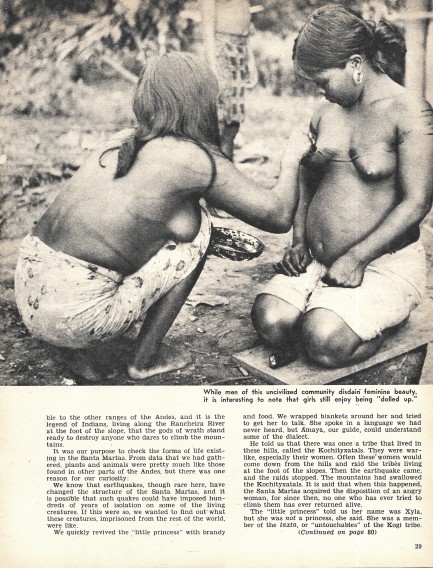
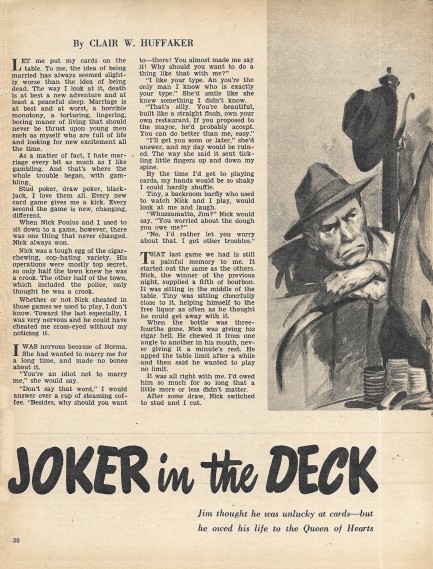
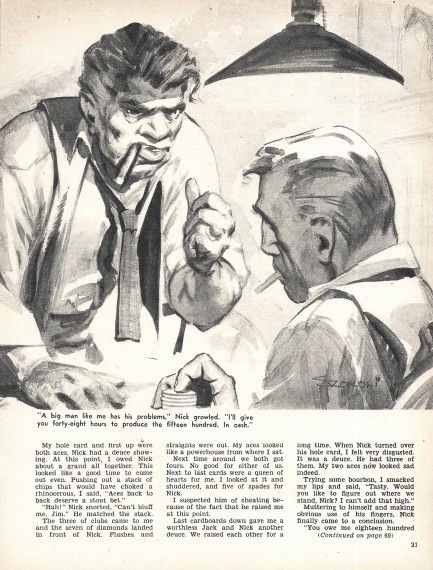
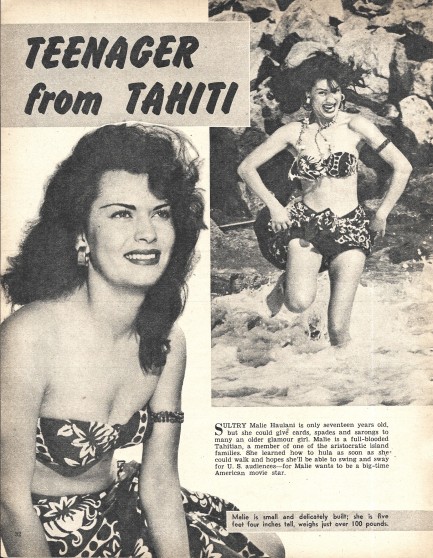
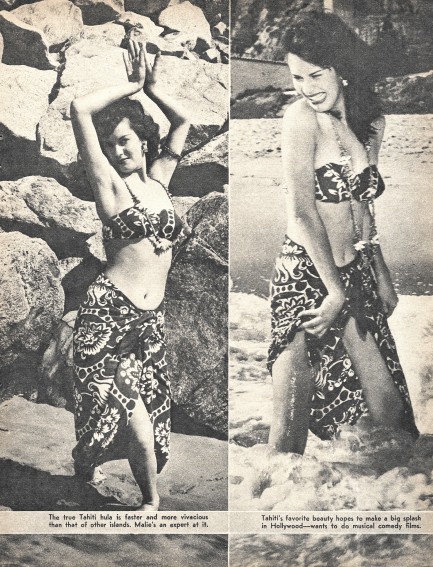
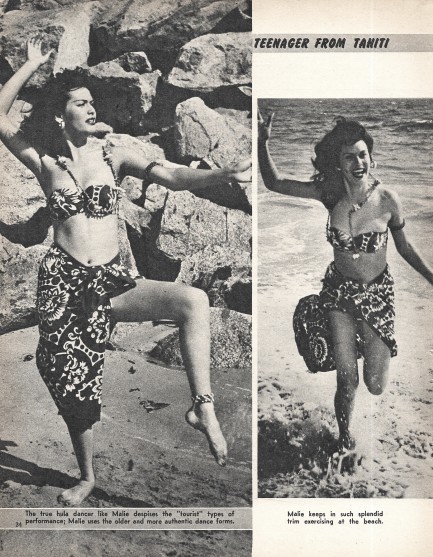
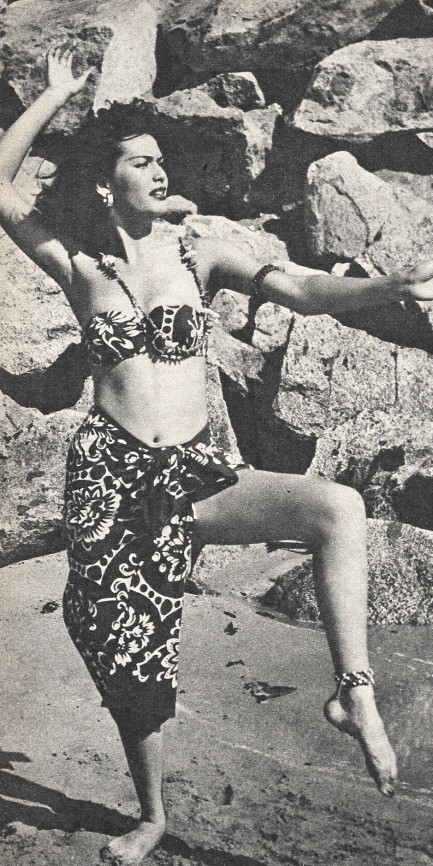


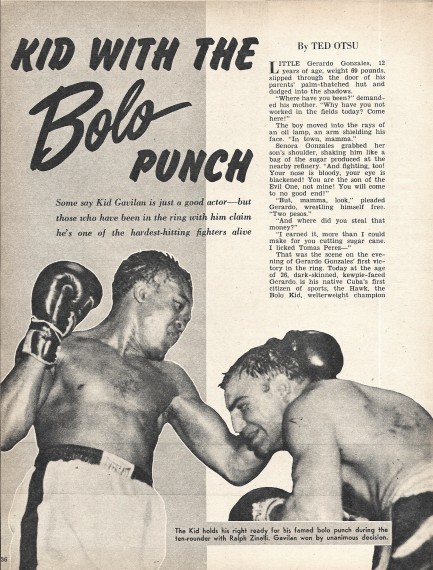
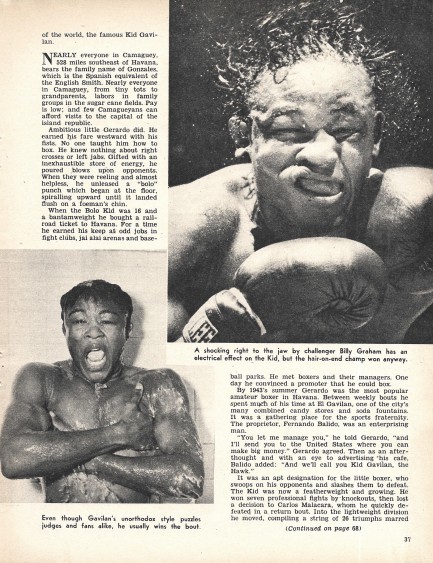


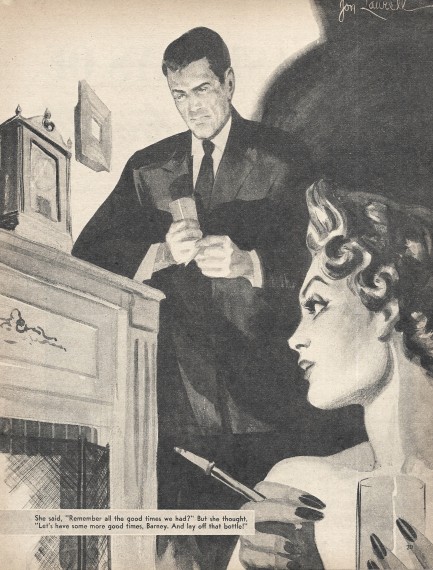
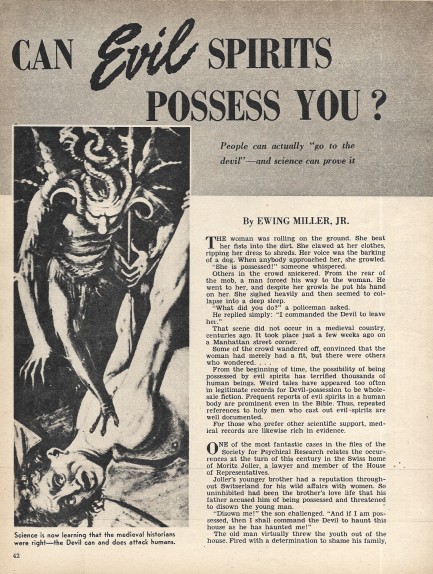
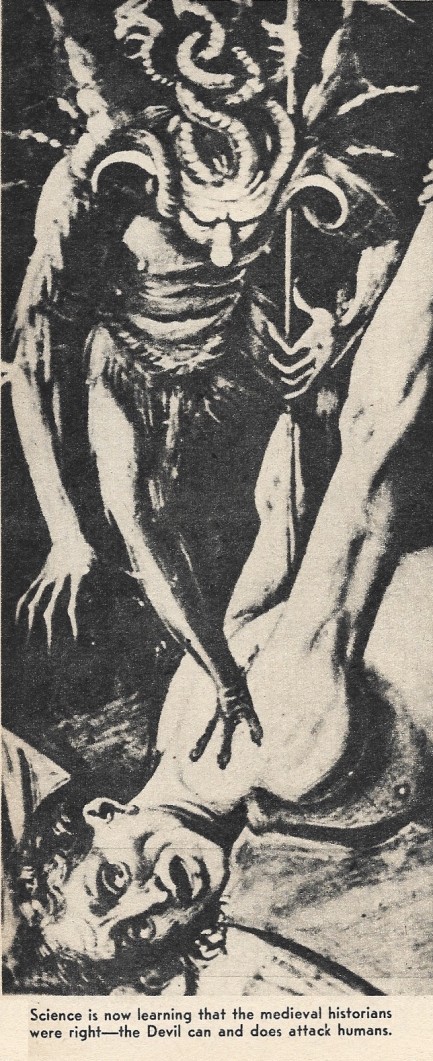
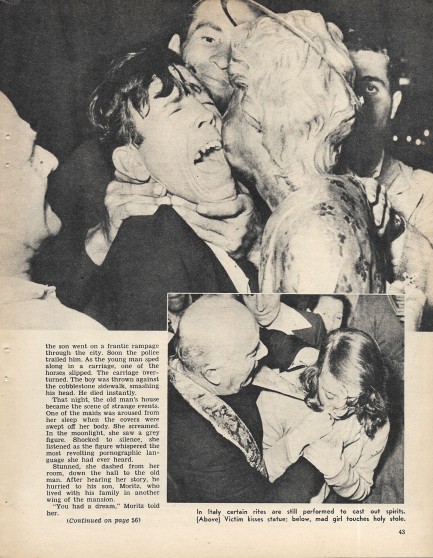


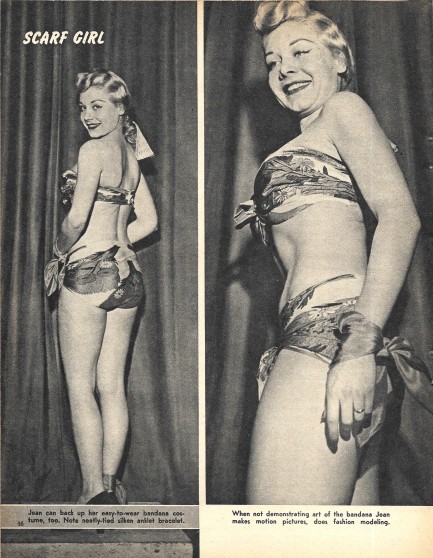
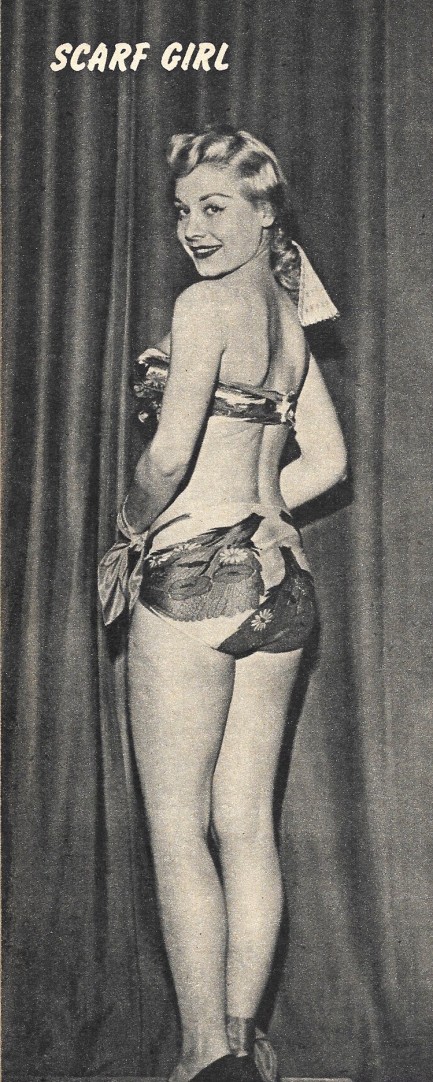





































| Intl. Notebook | Oct 18 2020 |

Private island available. Great views. No services, no electricity, no refunds.
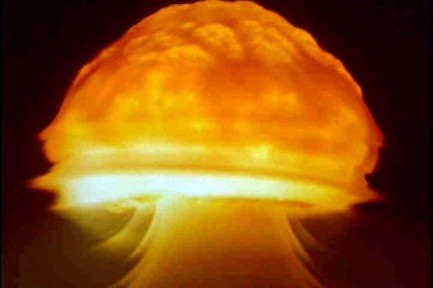
Above, an alternate view of the Dominic Chama nuclear test conducted on Johnston Atoll, aka Kalama Atoll, today in 1962. You can see the other photo here. In 2005 the place was put up for auction by the U.S. government as a potential vacation getaway or possible eco-tourism hub. We're not sure how much eco there was, considering the place was not only nuked multiple times, but used for biological weapons testing and Agent Orange storage, but it didn't matter because there were no takers, and the offer was withdrawn. It might still be possible to buy it, though, if you have any connections in the U.S. State Department. We bet your resort would get glowing reviews.
| Vintage Pulp | Sep 17 2020 |

In today's forecast there's a thirty percent chance of radioactive rain.
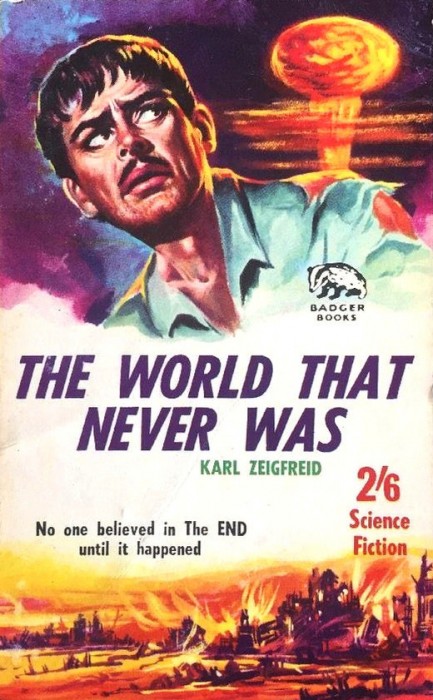
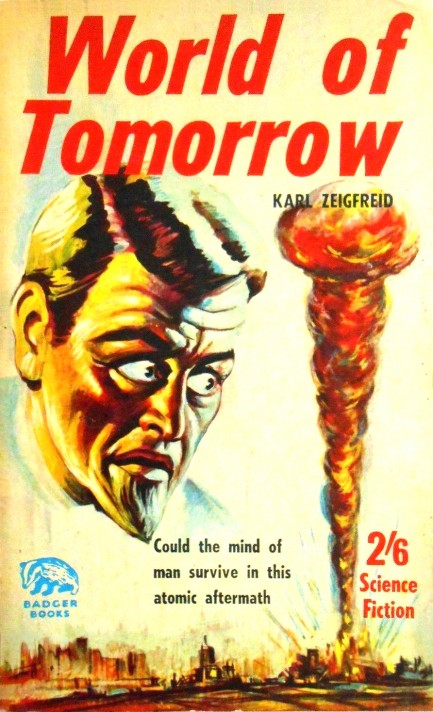
These two covers from Badger Books with art by Henry Fox and uncredited (probably Fox again) serve as an addendum to our collection of covers featuring nuclear explosions. Author Karl Zeigfreid is an interesting figure. He was really British stage, television, and radio actor Lionel Fanthorpe. As Zeigfreid and other personae he wrote more than one hundred paperbacks, and is still churning them out, with his most recent effort hitting shelves (or online sellers) last year. He published both of the above books in 1963, as well as several others that hit on themes of mass death and apocalyptic destruction and searing heat and melty skin and bloody vomiting and burned out eyeballs. Always keeping it light here at Pulp Intl. Still, it's useful to be reminded occasionally that the threat of nuclear conflict remains high, because humans are bad at sharing, particularly when it comes to planetary resources. Despite all the supposedly complex reasons for geopolitical conflict, the reality is the adults of our species are no better than children. Well, let's hope the melty eyes thing never happens. Then you wouldn't be able to see our website.
| Intl. Notebook | Jun 7 2020 |

There's no shelter from a storm this bad.
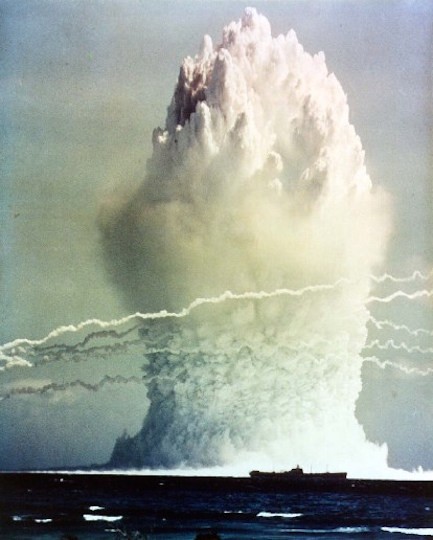
Above is a photo of the underwater nuclear test codenamed Umbrella, which was part of the Hardtack series of tests conducted by the U.S. in the Pacific Proving Grounds—aka Marshall Islands—in the South Pacific. The test happened today in 1958.
| Intl. Notebook | May 2 2020 |

Nothing says generosity like sharing your radioactive fallout.
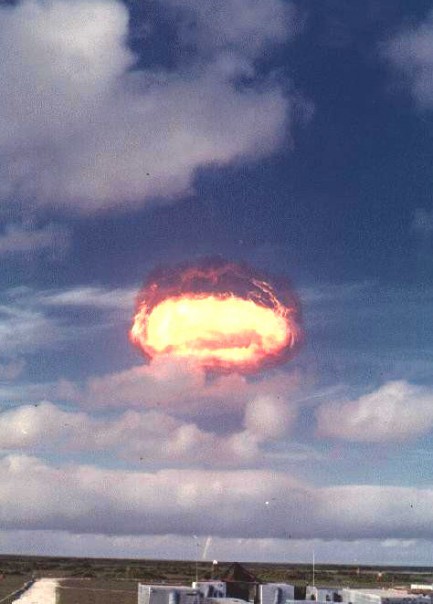
Today in 1962 on Christmas Island, aka Kiritimati, in the South Pacific, the U.S. detonated a 1.09-megaton nuclear bomb codenamed Arkansas, which was part of the test series Operation Dominic. It was an airborne blast, set off at 5,030 feet, designed to measure electromagnetic pulse phenomena. Numerous local people inhabited the island during this and other explosions. They were typically moved to boats or other collection points at the time of detonation, before being sent back to to their homes, now coated in radioactive dust. Like many nuclear test photos, this one is colorful and surreal, ultimately disguising and beautifying what is simultaneously a symbol of humanity's technological prowess and violent primitiveness. We have numerous test photos and many are even more striking than this one. See those by clicking keyword nukes below.
| Intl. Notebook | Feb 6 2020 |

It's not an arms race until there are fireworks.
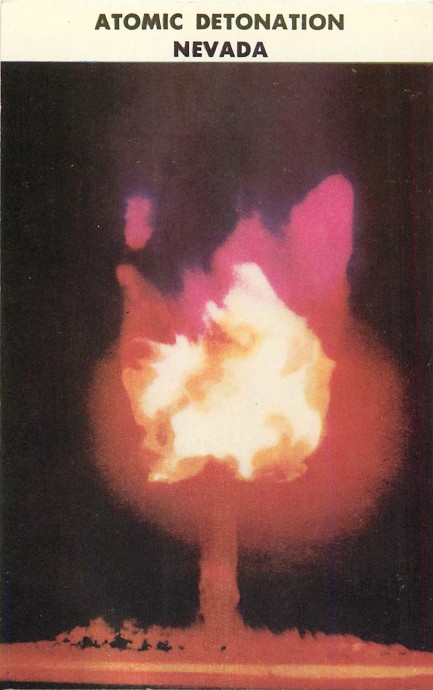
Proving once again that people will buy anything, especially if it's cheap, above you see a postcard depicting the nuclear test Fox, which was conducted as part of Operation Ranger today in 1951. The operation comprised five tests, all in aerial bomb form, dropped and detonated over Frenchman Flat test site in Nevada. The postcard was manufactured by the Desert Supply Co. of Las Vegas, which makes sense because this is exactly what happens to your wallet if you go to Vegas.
Since the postcard image a a bit faded, below we have an actual shot of the test in all its insane crimson splendor. Only these devices have the ability to send civilization back to the stone age. Global warming, a pandemic, anything else you care to name, falls well short. And the nuclear arms race is ongoing, as several atomic powers are recklessly upgrading and expanding their arsenals. Want to see another interesting image of this event? Look here.
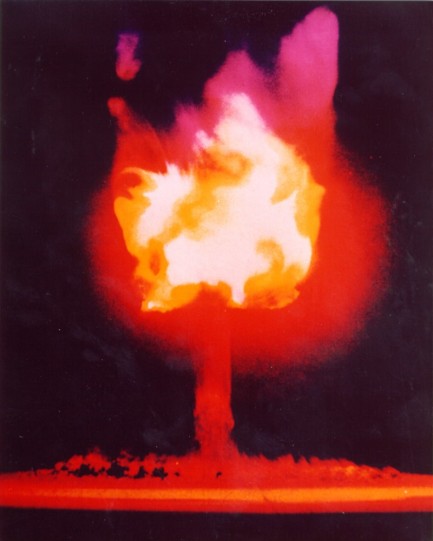
| Intl. Notebook | Oct 16 2019 |

China figures out how to kiloton of people.
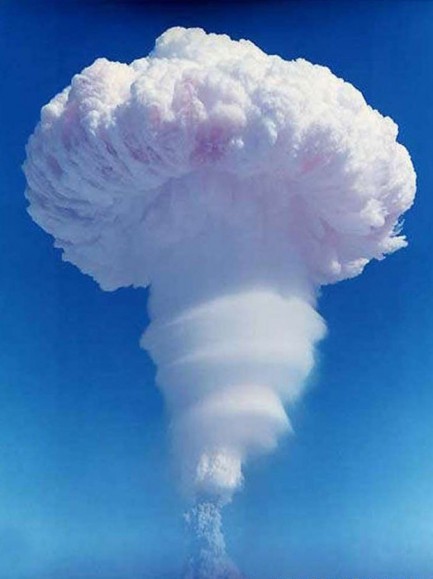
This photo shows the first Chinese nuclear device, detonated today at Lop Nur in 1964. The U.S., Russia, France, and England were already members of the worst club ever devised—the nuclear club, the one aliens will write into the galactic history books as proof of humanity's inferior intelligence. China's tower mounted bomb was about the size of the U.S. bomb dropped on Hiroshima, a mere balloon pop. For the sake of comparison, the most powerful nuke ever detonated exploded with the power of 57 million tons of TNT, more than 1,500 times the destructive power of the Hiroshima and Nagasaki bombs combined. Put another way, it was ten times more powerful than all the munitions expended during World War II. Put still a third way, its shockwave circled the entire Earth three times. China very well might build a bomb like that too one day. Just to be like the cool kids. See another image of the above test here.
| Intl. Notebook | Apr 15 2019 |

Some encounters you remember better than others.
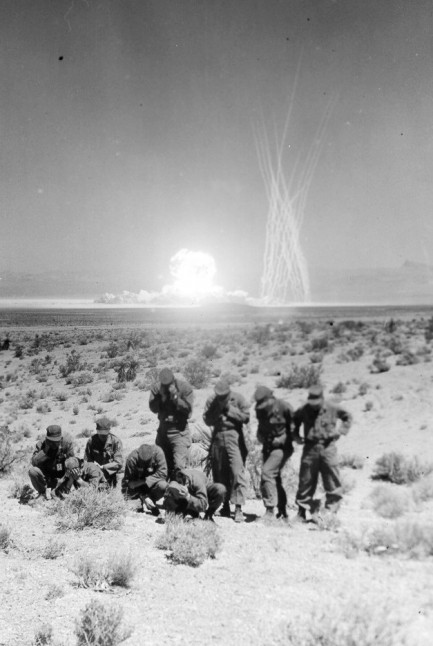
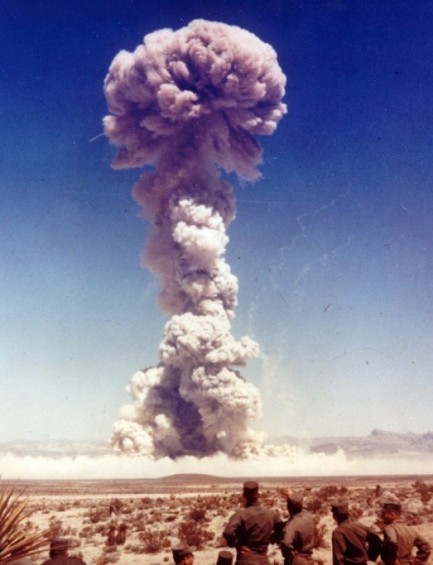
Above, two photos of the 22-kiloton nuclear test codenamed MET, part of the series Operation Teapot, detonated at Frenchman Flat, Nevada, with military observers first shielding their eyes, then regarding the debris cloud, today in 1955.
 |
 |




































































